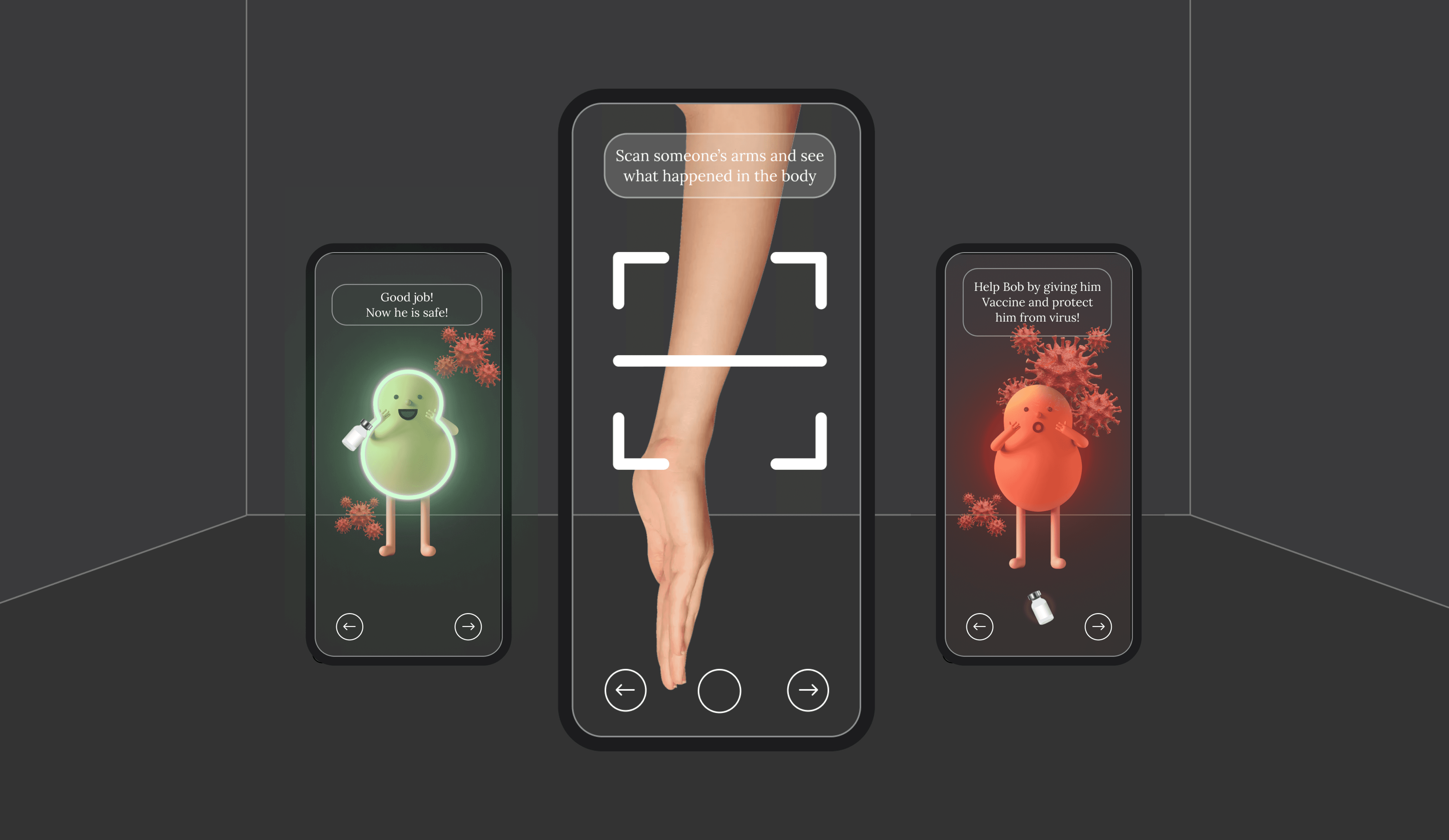UNICEF
—
2023
Microlearning Experiences
Team
Gunjan Alagh, Nikhila, Ding LI, Juanita Thota
STATUS
Part of UNICEF Innovation Nodes

In this project, we aimed to design microlearning experiences that encourage children’s curiosity and enable them to engage with complex concepts in biotechnology.
CONTEXT
UNICEF Office of Innovation would like to introduce biotechnology to children in developing nations between the ages of 10-13 outside of formal schooling.
MY ROLE
I led the team by helping prioritize tasks and collaborating with stakeholders to ensure alignment and clear direction.
My responsibilities included identifying pain points, defining problem scope, conducting user research and testing, gathering insights, and creating both low and high-fidelity designs.

Young voices, big impact
Our target audience was a diverse group of curious young learners from around the globe. We co-created the experience with 11 children—boys and girls from six different countries—through conversations in five languages. This ensured our design was both inclusive and resonant.

The world through their eyes
We used storyboarding and card sorting activities to step into the children’s world, exploring how they learn and what they care about. These exercises revealed their unique perspectives and helped us design experiences that truly resonate with them.

With their point of view in mind, we honed in on five pivotal areas to focus on in our design solutions

Through quick testing of our initial ideas, we landed on two concepts that could simplify complex ideas through play, while also appealing to a wide range of audiences.
Concept 1: Using AR

Phase 1 features a physical card game, providing a tactile, peer-based way for children to learn without needing internet or smartphones.
Phase 2 takes learning further with a mobile app that uses AR to deliver immersive micro-learning experiences. This phase helps children engage with complex concepts in a way that’s both interactive and relevant to their own context.
Concept 2: Learn through play

Phase 1 introduces a card game that builds awareness and kickstarts the learning process in a fun, approachable way.
Phase 2—a web app that extends learning with adjustable difficulty levels—the card game stands alone as a valuable resource, offering an engaging, self-contained learning experience.

CARD GAME




From paper sketches to digital prototypes: a journey shaped by iterative user testing.

Card game + Web Application prototypes

Our research with children revealed that illustrations significantly enhance comprehension, enabling them to grasp complex concepts more effectively through visual analogies.
MOBILE APPLICATION

Images: AR game concept based on child’s quote “Vaccination is like boxers fighting the bad things in your body”
The story of Dalisay
Execution & Reach
Project Play is a UNICEF initiative that makes pre-printed and pre-cut toys onto RUTF cardboard packaging. This is where our execution strategy stemmed from. We designed our entire game experience to be a part of these boxes and enable biotechnology to touch the lives of millions of children.

Play is critical for healthy childhood development, helping to build cognitive, social and physical skills. Designed to be inclusive, designed with contrast colours, tactile features, easy grip, ensuring all children with and without disabilities can play with them.
UNICEF could reach an estimated 7.3 million children by repurposing RUTF cardboard boxes into toys.
The team
